Why Does My Car Battery Light Stay On Even After Replacement – Fix It Now!
If your car’s battery light stays on after a replacement, it might indicate problems beyond the battery itself. Common causes include a faulty alternator, loose or corroded connections, or issues with the voltage regulator.
It’s also important to ensure the battery is fully charged and properly installed. Ignoring this warning could lead to bigger electrical failures.
Understanding the Car Battery Warning Light:
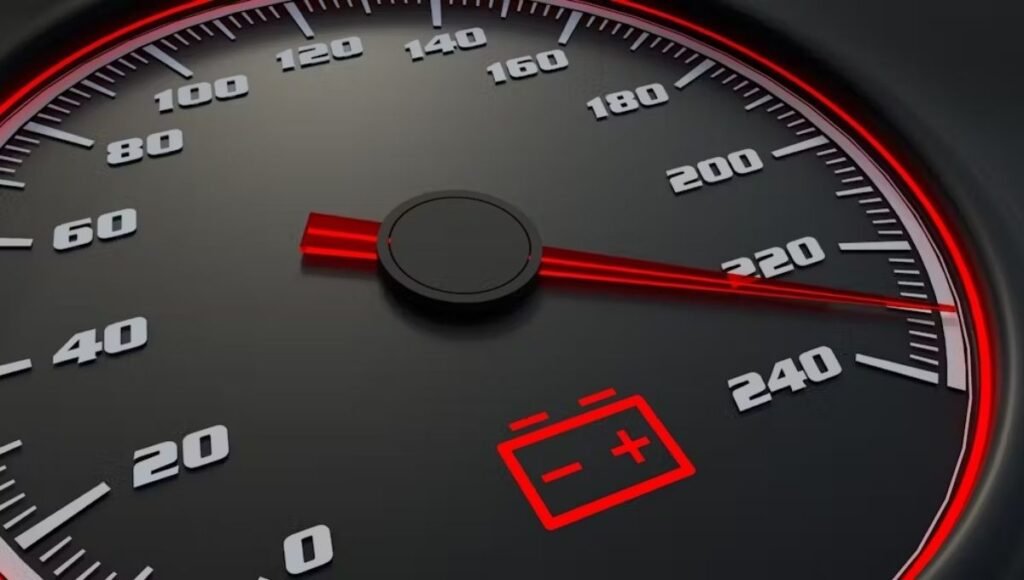
The car battery warning light is an essential indicator on your dashboard. It’s designed to alert drivers to potential issues with the vehicle’s electrical system. When the battery light comes on, it means your car’s charging system isn’t working as it should.
While this warning doesn’t necessarily point to a dead battery, it indicates that the battery isn’t being recharged properly, which could lead to larger problems if ignored. See if the car’s battery has enough charge left to keep your vehicle running.
What the Battery Warning Light Means for Your Vehicle:
When the battery light goes on, it signals a problem with the vehicle’s electrical charging system. This doesn’t just mean an issue with the battery; it could involve the alternator, voltage regulator, or other parts of the system that maintain the correct voltage.
Driving along with a faulty charging system can result in the battery light staying on, eventually leaving you stranded with a car that won’t start. The smartest thing to do when this light appears is to address the issue before it leads to more significant damage.
Why Ignoring the Battery Light Can Lead to Bigger Problems:
Ignoring the battery warning light is tempting, especially if the car is still running smoothly. However, if your car is draining the power left in the battery without charging it, you’re only postponing a bigger issue.
The battery light will come on when your alternator isn’t functioning correctly or if the alternator still recharges the battery inefficiently.
Letting the problem persist can lead to failures in other critical electrical components of your car, including your headlights, power windows, and power steering.
read also: What Size Alternator Do I Need for 2 Batteries – Your Complete Answer!
Common Reasons the Battery Warning Light Stays On:
There are several reasons for the battery light staying on after starting your car. A failing alternator, loose battery connections, or a broken alternator belt can all cause the light to remain illuminated.
The battery properly delivering power to the vehicle depends on the alternator working to recharge it while the engine is running. If the alternator isn’t working or a fuse has blown, the battery won’t maintain enough charge, and the warning light will stay on.
Electrical System Issues: More Than Just the Battery
When the battery light comes on, it may not be due to the battery itself. Issues with the car’s electrical system can also trigger this warning. The system consists of several components, including the alternator, voltage regulator, and wiring.
These parts work together to ensure that power flows correctly to your vehicle. Problems in this complex system, such as short circuits or faulty ground wires, could be the reason the light is on.
Alternator Failure: A Key Culprit in Persistent Battery Light
A malfunctioning alternator is one of the most common reasons for the battery light staying on. The alternator is responsible for keeping the battery charged while the engine is running.
If the alternator isn’t producing the correct voltage, the battery won’t recharge properly, causing the light to illuminate.
You can check the alternator with a multimeter or take it to an auto repair shop for a bench test. If the problem persists, the issue could be with the alternator’s internal regulator or rectifier.
Corroded or Loose Battery Connections: Simple Fix, Major Impact
Corroded or loose battery terminals can cause a battery charging problem. Even if your car’s battery is relatively new, poor connections can prevent the alternator from charging it properly.
Signs of corrosion on the terminals, such as a white or greenish substance, could signal that the battery isn’t getting the power it needs. Cleaning the terminals and tightening the clamps could easily resolve the issue.
Post-Replacement Troubles: Why the Battery Warning Light Remains
If you’ve recently replaced your battery and the battery light is still on, there could be an issue with the installation or the charging system. Double-check to see if the battery was installed correctly and that all connections are secure.
It’s also possible the new battery wasn’t fully charged when installed. A low-charged battery can trigger the light. If the problem persists, you might need to examine other components of the system, like the alternator or voltage regulator.
Faulty Installation: Did You Properly Install the New Battery?
Improper installation can cause the battery light to come on even after you’ve replaced the battery. Ensuring the battery is seated correctly and that the terminals are tight is crucial.
If a wire is loose or a connection isn’t secure, the battery won’t recharge, and the charging system issues will persist. Always follow the owner’s manual when installing a new battery to avoid these problems.
Is Your New Battery Fully Charged? Why This Step Matters
When installing a new battery, it’s important to check if it’s fully charged. Many new batteries come with only a partial charge, and if you start your car without properly charging the battery, the battery light will come on.
Use a charger to bring the battery to full capacity before installation. A battery charging problem can also arise if the alternator isn’t working properly, so be sure to test it if the light stays on.
Why a Malfunctioning Voltage Regulator Could Keep the Battery Light On:
The voltage regulator plays a critical role in managing the flow of electricity from the alternator to the battery.
If the regulator fails, it can either supply too much or too little power, causing the battery light to come on. In some cases, the regulator is part of the alternator, so a problem with the alternator may also indicate a faulty regulator.
Diagnosing the Problem: Steps to Take When the Battery Light Stays On
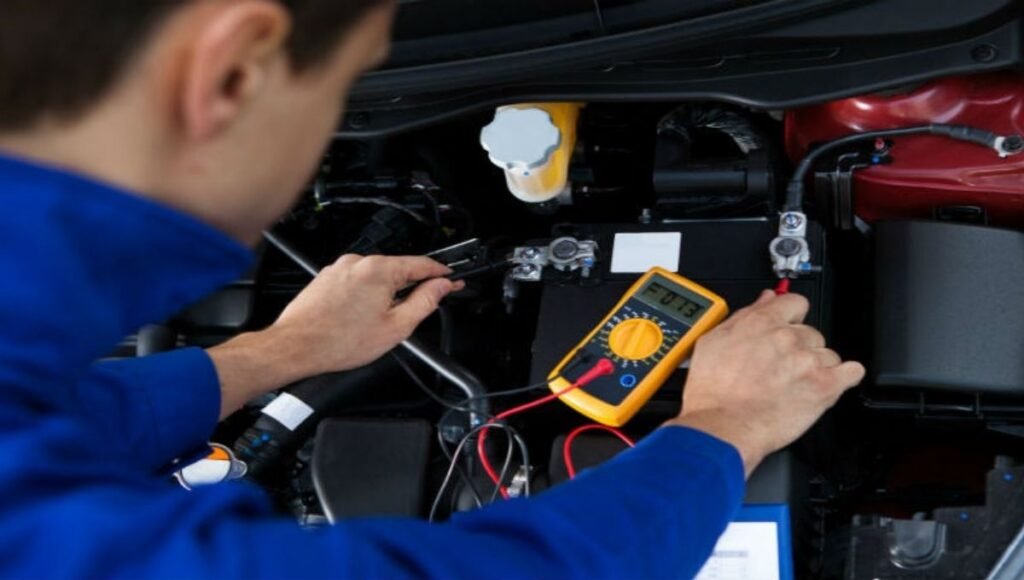
When you notice the battery light staying on, there are several steps you can take to diagnose the issue. First, check the battery’s charge level with a multimeter.
If the battery’s voltage is low, there could be an issue with the alternator or charging system. Next, inspect the serpentine belt to ensure it’s intact and functioning properly. Finally, check for any visible signs of corrosion or loose connections at the battery terminals.
Electrical and Charging System Issues That Trigger the Battery Light:
When the battery warning light illuminates on your dashboard, it’s an indication that something within the vehicle’s electrical and charging system has gone awry.
While many associate this light solely with the battery itself, the problem could lie in a much broader spectrum of components.
These systems are intricate, relying on a balance of properly functioning parts to ensure your car’s battery remains charged and your vehicle powered. Faults within this network can disrupt power distribution, leading to bigger issues if ignored.
Faulty Ground Wires: How a Small Disconnection Can Cause Big Issues
A seemingly minor issue like a faulty ground wire can wreak havoc on your vehicle’s electrical system. The ground wire connects the battery to the car’s chassis, completing the electrical circuit.
If it becomes loose or corroded, the current flow is interrupted, leading to erratic electrical behavior and causing the battery warning light to come on.
What may appear as a simple disconnection can result in voltage fluctuations, power surges, and even the eventual failure of other electrical components, making this a small issue with potentially massive consequences.
Blown Fuses or Relays: What to Check in Your Vehicle’s Fuse Box
Your car’s electrical system relies on a network of fuses and relays to protect various components from power surges. A blown fuse may not seem like a major problem, but it can prevent critical systems from receiving power, causing the battery light to stay illuminated.
A faulty relay can likewise disrupt the charging process. Inspecting the vehicle’s fuse box for any blown fuses or malfunctioning relays should be one of the first steps in diagnosing electrical system issues, as these components act as safeguards for the more complex systems they protect.
read also: Can You Put an 18V Battery on a 12V Motor – Here’s What Happens!
Short Circuits or Electrical Drains: Why Your Car’s Power System Could Be Failing
Short circuits or unexpected electrical drains are frequent culprits when the battery light stays on. A short circuit occurs when an electrical current takes an unintended path, bypassing the normal route through your car’s system.
This not only causes the battery to drain but can also damage wiring and components. Similarly, parasitic electrical drains—such as a faulty radio or improperly installed aftermarket parts—can slowly sap power from your battery, leading to a charging system failure.
When It’s Not the Battery: Other Causes for a Persistent Battery Warning Light
When the battery light persists despite a fully functioning battery, other components of the electrical system are likely at fault. The alternator, responsible for recharging the battery while the engine runs, could be malfunctioning, failing to supply the proper voltage.
In other cases, a defective voltage regulator could be sending erratic electrical signals. Loose wiring, frayed connections, or even issues with the serpentine belt driving the alternator can all contribute to the problem, creating a chain reaction of electrical disturbances.
Starter Motor Problems: How They Impact the Battery Light
The starter motor draws significant power from the battery to turn over the engine. If the starter is faulty or struggling to engage, it could leave your battery in a weakened state.
This could trigger the battery warning light as the car’s electrical system detects that the battery isn’t operating at full capacity. Furthermore, a malfunctioning starter can cause an excessive drain on the battery, exacerbating the issue and potentially leading to a complete power failure.
How an Overheating Engine Can Trigger the Battery Light to Stay On:
While it may seem unrelated, an overheating engine can indirectly cause the battery light to remain on. High engine temperatures can lead to the degradation of vital components such as the alternator or voltage regulator, impairing their ability to manage the battery’s charge.
Additionally, overheating can strain the serpentine belt, causing it to slip or break, further disrupting the charging system. This creates a cascading effect where the vehicle’s electrical system suffers, and the battery light stays illuminated as a result.
Ignition Switch Faults: Could This Be the Root of Your Problem?

The ignition switch serves as the gateway for your car’s electrical system. A faulty ignition switch can disrupt the flow of power to essential components, including the battery and alternator.
In some cases, it may cause intermittent electrical power or complete failure to start the vehicle. If the battery warning light appears alongside difficulty starting your car or unusual electrical behavior, the ignition switch may be the underlying issue.
What to Do When Your Battery Warning Light Stays On After Replacement:
Replacing the battery doesn’t always guarantee that the issue will be resolved, particularly if the underlying problem lies within the charging system. If the battery warning light remains on after replacement, it’s crucial to check the alternator, voltage regulator, and wiring for faults.
Additionally, ensure the battery was installed correctly, with all connections secure and terminals free of corrosion. Failure to do so can cause the light to stay on despite a brand-new battery being in place.
DIY Troubleshooting Steps: What You Can Fix at Home
For the more mechanically inclined, there are several DIY troubleshooting steps you can take when the battery light stays on. Start by checking the battery terminals for corrosion or loose connections.
Next, use a multimeter to test the battery’s voltage and the alternator’s output to see if they’re functioning within normal parameters. Inspect the serpentine belt for any signs of wear or slipping, as this could indicate an issue with the alternator.
Finally, check the fuse box for blown fuses or damaged relays that could be interrupting the electrical circuit.
When to Call a Professional Mechanic: Signs You Need Expert Help
While DIY troubleshooting can resolve many issues, some problems require the expertise of a professional mechanic. If the alternator is failing, the voltage regulator is malfunctioning, or there are complex wiring issues, it’s best to seek professional help.
Signs that you need expert assistance include a burning smell, visible smoke from under the hood, or repeated electrical failures despite basic troubleshooting. A professional can conduct thorough diagnostics, using advanced tools to identify and repair the root cause of the battery warning light.
read also: How to Charge a Positive Ground Battery – Here’s How!
FAQ’s
1. What does the car battery warning light indicate?
The battery warning light signals an issue with the vehicle’s electrical charging system, not necessarily the battery itself.
2. Can I continue driving if the battery light is on?
It’s not recommended. Driving with the light on can lead to more severe electrical failures, including a completely dead battery.
3. What are common reasons for the battery light to stay on?
A failing alternator, loose connections, blown fuses, or a faulty voltage regulator are common causes.
4. Does replacing the battery always fix the warning light issue?
Not always. If the alternator, voltage regulator, or wiring is faulty, the light may stay on even with a new battery.
5. How can I troubleshoot the battery light issue at home?
Check the battery terminals for corrosion, use a multimeter to test voltage, inspect the serpentine belt, and check for blown fuses.
Conclusion:
The battery warning light is not something to ignore. Whether it’s an issue with the alternator, the battery itself, or another part of the vehicle’s electrical system, prompt action can save you from being stranded or dealing with more costly repairs. Regular maintenance and proactive troubleshooting are essential for keeping your car’s battery and charging system in optimal condition.
Read Also:
What is the Advantage of 2.6 Volt Batteries in Series – The Power of Efficiency!
What Gauge Wire to Connect 12V Batteries in Parallel – Complete Guide!
How to Troubleshoot a Car That Won’t Start Despite a New Battery – Here’s What to Do!
Can a Bad Alternator Stop Battery from Charging – Quick Fix Guide!
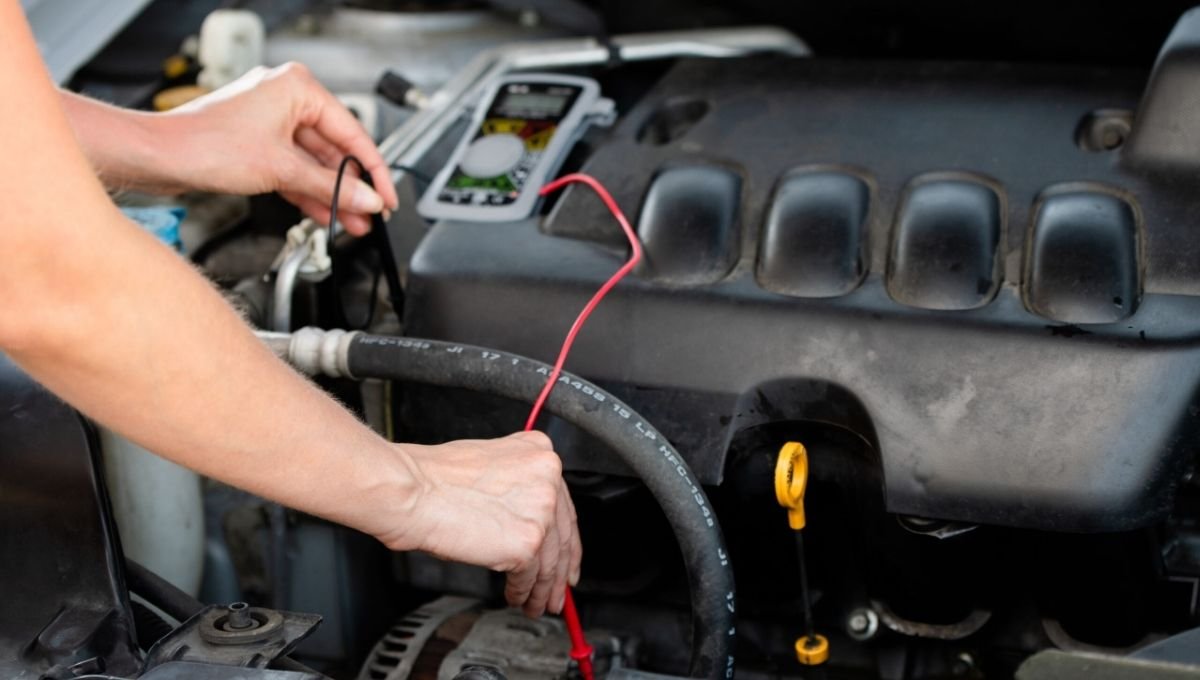

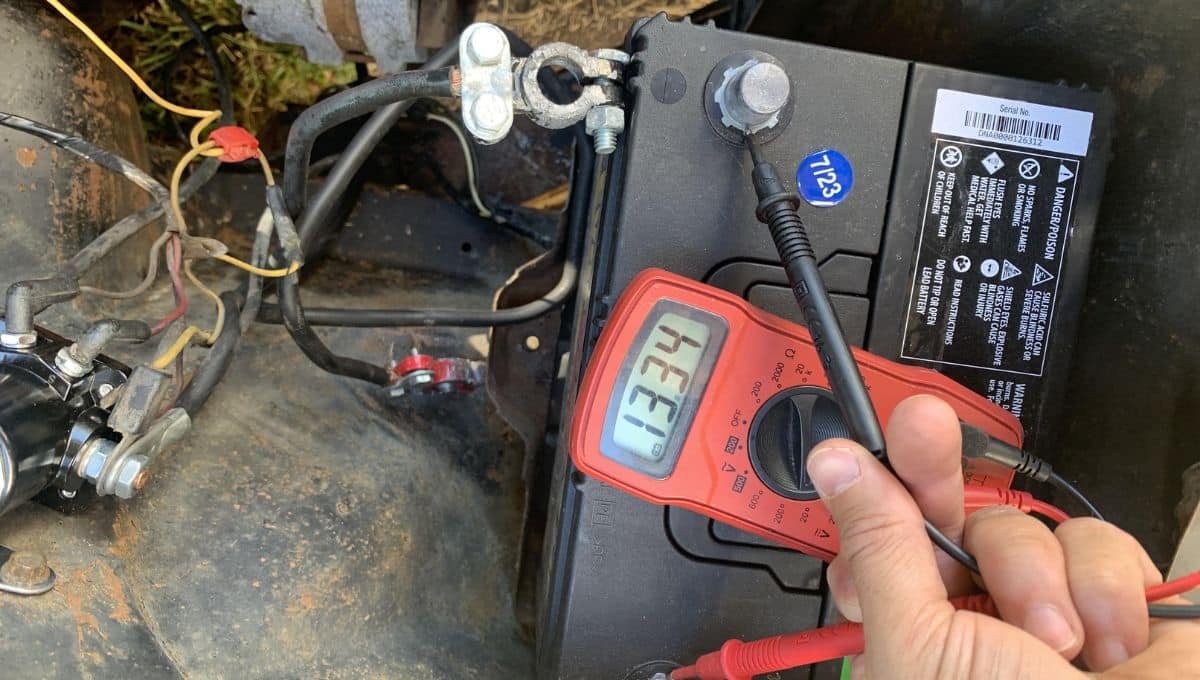


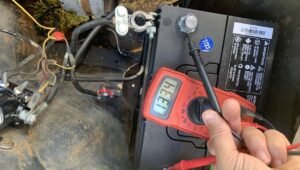








Post Comment